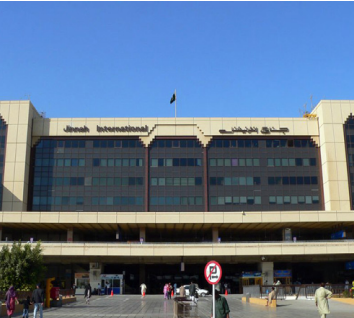
The sukuk of choice in Pakistan has been based on the ijara, a structure that was favoured by Mufti Taqi Usmani in his pivotal and game-changing paper “Sukuk and its contemporary applications”. The sovereign sukuk has been a means by which the Pakistani government have generated funds. Bushra Shafique, Deputy Director at the State Bank of Pakistan, provides insights into the issuance of sovereign sukuk in Pakistan.
Pakistan joined the sukuk market in 2005 with the issuance of an international sovereign sukuk. Since then 74 sukuk valued at more than Rs.620 billion (US $ 5.87 billion) have been issued. There have been 15 sovereign Government of Pakistan (GOP) sukuk and 59 corporate or quasi-sovereign entities. In line with international trends, corporate sukuk represented a major share of the domestic sukuk market until March 2009 after which sovereign sukuk rose and corporate sukuk started to decline. At present ijara based sovereign sukuk dominate with more than 84 percent share.
Sovereign sukuk issuance in Pakistan
International sovereign sukuk The very first sovereign sukuk issued in Pakistan in 2005 was a dollar-denominated ijara-based international sukuk that was listed on the Luxemburg stock exchange. This five-year sovereign sukuk of US$600 million was issued against M-1Motorway from Peshawar to Islamabad with CitiBank and HSBC being lead managers. The sukuk (B+ rated by Standard & Poor) offered a semi-annual floating rate of return of LIBOR+ 220 bps, and attracted around US$ 1.2 billion. The demand for this sukuk came from diverse geographic locations and from both conventional and Islamic financial institutions (Table 3).
Domestic Sovereign Sukuk The domestic market for sovereign sukuk took off in September 2008 with an issuance of a Rs.6.5 billion (US$ 0.062 billion) sukuk. Since, 14 issues with a volume of Rs. 501 billion (US $ 4.75billion) have been offered. The structure of these sukuk was based on the ijara principle (details are given below) and each issue was approved by the Shari’a Board of the State Bank of Pakistan (SBP).
General structure of domestic ijara sukuk
1. The assets to be used by the government for issuance of sukuk are identified and evaluated by two independent evaluators who are approved by Pakistan Banks Association (PBA). The lowest among two evaluations is used to determine the sale price of the identified asset.
2. SBP conducts an auction. All banks (Islamic as well as conventional) are allowed to participate in the auction.
3. The identified investors appoint a special purpose vehicle (SPV), Pakistan Domestic sukuk Company Limited (PDSCL) as their agent.
4. The SPV (PDSCL), as an agent of the investors, uses the proceeds from the sukuk subscription to purchase assets from the government. Accordingly the risks and rewards of the asset ownership are passed on to the investors.
5. The utilization of the sale proceeds of the assets by the government are utilized in Shari’a permissible ventures.
6. A declaration of trust is executed on the purchased assets in favor of the investors and sukuk are issued evidencing undivided ownership of these assets by the investors.
7. The SPV (PDSCL) on behalf of the investors leases the assets to the government for a fixed period. The sukuk investors receive lease rentals regularly as return on their investments in the sukuk assets. The government can also be appointed as service agent for the investors (sukuk holders/lessor) to undertake the servicing (e.g. major repair and maintenance, etc.) of the assets during the term of the lease.
8. At maturity, the SPV sells the assets to the government at an agreed price and sukuk are redeemed using the sale proceeds of the assets.
These are general details of the structure. Some minor deviations may be found in each of the domestic sovereign sukuk depending upon the nature of the assets and legal status of the entities involved. A series of agreements including Sukuk Subscription Undertaking, Sukuk Issuance Undertaking, Purchase Agreement, Declaration of Trust, Agency Agreement, Ijara Agreement, Service Agency Agreement and Purchase Agreement are executed by the parties involved (i.e. government, investors and their agents.) whereby role and responsibilities of all the parties are described along with their associated risks.
| Table 3 : Geographic Distribution of GoP International Sukuk | |
| Percent | |
| Investors | |
| Central Banks and Government | 25 |
| Asset Managers | 23 |
| Islamic institutions | 20 |
| Banks | 18 |
| Others* | 14 |
| Geographic Location | |
| Middle East | 47 |
| Asia | 31 |
| Europe | 22 |
| * Private banks, retail intermediaries and insurance companies | |
| and corporates |
Ijara sukuk rules
The Government of Pakistan Ijara Sukuk Rules 2008 governs the issuance of sovereign sukuk. According to these rules:
1. The maturity period of the first sukuk is three years from the date of issue. Later, the company may issue sukuk having longer or shorter maturity periods but the shortest period shall not be less than one year as notified by the State Bank of Pakistan.
2. The sukuk is issued in multiple of one hundred thousand rupees where each sukuk represents an undivided ownership of the asset.
3. The profit on the sukuk is paid bi-annually in accordance to the rental rate announced by SBP prior to the start of each half year.
4. The sale of the sukuk is done by auction to Islamic banks and to the primary dealers as determined by SBP and therefore the bidding is also allowed only in the manner specified by SBP.
5. The sukuk are scriptless and are registered with SBP.
6. The sukuk are not redeemable before maturity; however they are transferable and can also be traded in the secondary market.

7. Individuals, institutions, trusts, funds of all types, corporate bodies including banks, non-banking finance companies, insurance and takaful companies irrespective of their residential status can hold sukuk.
8. Payment of sukuk represents payment obligations of the government of Pakistan on account of the payment of rentals in respect of assets held on trust by and leased from the company; and on account of payment of purchase price to the company for purchase of an asset at the time of maturity.
| Table 4 : Domestic Ijara sukuk by the Govt. of Pakistan (million US $)* | ||||||
| Series | Action | Issue Date | Maturity Date | Amount of | Asset Against Sukuk | Status |
| Sukuk | ||||||
| GOP Ijara sukuk – 1 | 26/09/2008 | 26/09/2011 | 62 | M-3 Motorway | Matured | |
| S-1 | GOP Ijara sukuk – 2 | 29/12/2008 | 29/12/2011 | 57 | ||
| GOP Ijara sukuk – 3 | 11/03/2009 | 11/03/2012 | 145 | |||
| GOP Ijara sukuk – 4 | 17/09/2009 | 17/09/2012 | 136 | |||
| GOP Ijara sukuk – 5 | 15/11/2010 | 15/11/2013 | 491 | Jinnah International | ||
| S-2 | GOP Ijara sukuk – 6 | 20/12/2010 | 20/12/2013 | 352 | Airport ,Karachi | |
| GOP Ijara sukuk – 7 | 07/03/2011 | 07/03/2014 | 450 | Outstanding | ||
| GOP Ijara sukuk – 8 | 16/05/2011 | 16/05/2014 | 434 | |||
| GOP Ijara sukuk – 9 | 26/12/2011 | 26/12/2014 | 666 | M-2 Motorway | ||
| S-3 | GOP Ijara sukuk – 10 | 02/03/2012 | 02/03/2015 | 361 | ||
| GOP Ijara sukuk – 11 | 30/04/2012 | 30/04/2015 | 281 | |||
| GOP Ijara sukuk – 12 | 28/06/2012 | 28/06/2015 | 462 | |||
| GOP Ijara sukuk – 13 | 18/09/2012 | 18/09/2015 | 445 | |||
| S-4 | GOP Ijara sukuk – 14 | 28/03/2013 | 28/03/2016 | 408 | M-1 Motorway | |
| Total GOP Ijara sukuk | 4751 | |||||
| Total Outstanding GOP Ijara sukuk on 30/03/2013 | 3507 | |||||
| *Dollar-Rupee Exchange Rate for this table is 105.55 |

9. The sukuk is Statutory Liquidity Requirement (SLR) eligible for Islamic as well as conventional banks and can also be accepted by the banks and financial institutions as collateral for the purpose of financing.

10. The profit earned on the sukuk is liable to income tax in accordance with the laws of Pakistan. Withholding tax on the sukuk is deducted at the rate of ten percent at source. However, there is no compulsory deduction of zakat at source.
Status of domestic ijara sukuk
In the last five years, since the issuance of first domestic sukuk, four series containing a total of 14 auctions amounting to Rs. 501 billion (US$ 4.75 billion) have been issued on the basis of a Master Ijara agreement; at present the outstanding amount is Rs.370 billion (US$ 3.5 billion) (Table 4). Three of these series S-1, S-2, and S-4 were based on three motorways, Faisalabad-Pindibhattian Motorway (M3), Lahore-Islamabad Motorway (M2) and Islamabad-Peshawar Motorway (M1) respectively while S-3 was based on Jinnah International Airport, Karachi. In accordance to GOP Ijara Rules 2008 all of these sukuk issues are redeemable only at maturity though these can be traded on the secondary market.
Rentals of these floating instruments are linked with 6 month T-bill rate while the rent is paid on a bi-annual basis.
All issues of domestic sovereign sukuk till date are for a tenor of three years. All four series of sukuk were oversubscribed. However, among the 14 issuances only four– first, second, sixth and tenth – were undersubscribed. It is important to mention here that issuance of sukuk, especially issuances since 2010, assisted Islamic financial Institutions in their liquidity management capacity and improved asset quality.
Over the last couple of years, the government of Pakistan has resorted to the issuance of sovereign sukuk for much-needed funds. Both Islamic and conventional financial institutions have shown tremendous interest in them. The success of this sovereign sukuk is likely to encourage the government to raise funds from such sources in order to meet its developmental goals. Against this backdrop of interest from both the demand and supply side, it is expected that the domestic sukuk market is likely to remain buoyant.
ISFIRE Comment
The government of Pakistan has been running a huge budget deficit – at present Rs1.77 trillion or 8.6% of GDP – and it would have been wiser if the current government had been prudent with respect to borrowing. It, however, persisted in borrowing in order to meet its public sector borrowing requirements (PSBR). Ignoring the ill effects of public debt, Islamic banks in the country see it as a great help from the government to allow them to have access to government security for their liquidity management. Furthermore, the government’s involvement in Islamic banking and finance as an issuer of such Shari’a-compliant securities is expected to develop and deepen an Islamic capital market, which is deemed as vital for the future growth of Islamic banking and _nance in Pakistan. Those who object to the use of sukuk to raise money for PSBR are at best exaggerating the gravity of the issue. Realising the potential of sukuk in deepening capital markets, especially for the benefit of the Islamic banking sector, the Securities and Exchange Commission of Pakistan last year issued new guidelines for the issuance of sukuk. It was hoped that bringing regulatory certainty to the processes and procedures would spur interest from foreign investors, especially in neighbouring GCC countries. Those who are creating dissenting voices to the use of sukuk by the government are in fact harming the cause of attracting foreign capital into the economy. In the medium to long run, sukuk can be used as an instrument to discipline public sector borrowing, as sukuk requires an asset to be used to raise financing. This requirement is an inbuilt mechanism to restrict an issuer’s (including the government’s) ability to borrow money freely. In the past, the government used the M2 motorway to raise $600 million through an ijara sukuk (based on leasing) for a period of years (2005-11). Those who are against the use of Quaid-e-Azam International Airport Karachi for the issuance of sukuk last year must keep in mind that this structure is far safer than the previous M2 sukuk, which was offered to international investors. The government remained adamant that it would not allow the investors (sukuk holders) any recourse to the underlying asset (M2 motorway). The Karachi airport sukuk also does not provide recourse to the Sukuk holders in case of sovereign default (although from the Shari’a viewpoint is it better to give the investors recourse to the underlying asset). So, any fears that the government is endangering assets of national security by channelling it to the private sector are ill-informed.



